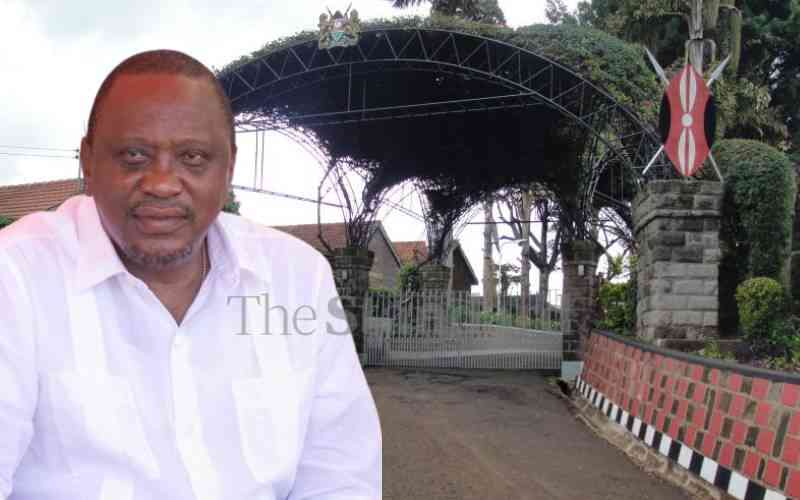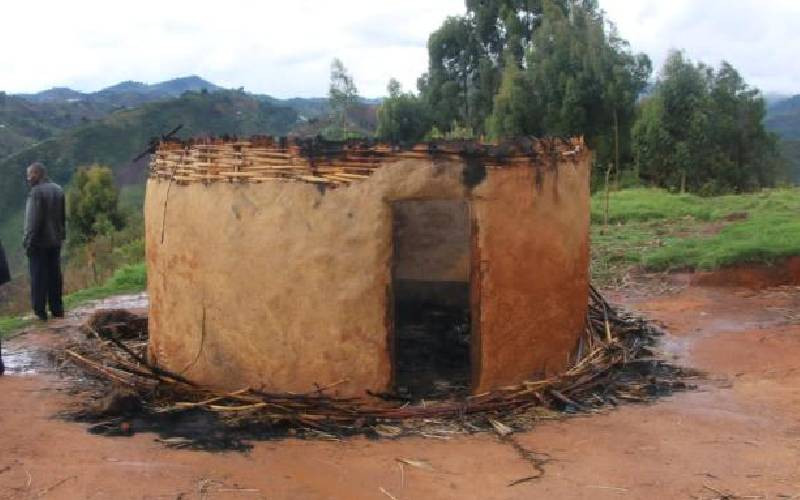It is a place rich with one of Kenya’s bit of history, one that defines our struggle for independence and that has stood the test of time 64 years on.
Kapenguria Museum, established in 1993, hosts the Kapenguria six prison cells that were at one point a holding site for Kenya’s first president Jomo Kenyatta and five other leaders.
The six cells stand tall with names of Kenyatta, Fred Kubai, Richard Oneko, Bildad Kagia, Kung’u Karumba and Paul Ngei branded on the doors. The cells are roofed with iron sheets that were placed there by the colonialists after being imported from Australia.
On each door is a hole that was used by colonial prison wardens to peep through to confirm whether the inmates were still confined in the cells and alive.
The buildings are still intact, the walls painted white as they have been since the Kapenguria six were there, and have contributed to keeping the spirit of the valiant men who occupied them alive.
Neat grass lawns provide a sense of life that came out of the intense struggle that led the six heroes being imprisoned after being accused of being behind the move to drive the British out of the country.
Hanging on the cell walls are portraits of the six leaders and information of their arrest, charges against them and acquittal.

At founding father Kenyatta’s cell is a bucket that was used by the founding father and acted as toilet during the trial which lasted for 48 days before the men were sentenced.
The museum is frequented by both local and international visitors who want to acquaint themselves with facts around one of Kenya’s crucial pre-independence period.
According to Caroline Wanyonyi, officer-in-charge of the museum, the rich history of Kapenguria six began in 1952 when there was increased unrest that resulted in declaration of a state of emergency.
On the colonial masters’ radar were Kenyatta and the five leaders who were finally arrested and transferred to Kapenguria miles away from the city.
The reason was to keep them away from Mau Mau fighters who the colonialist believed would break into cells and release them.
Wanyonyi noted that beside the cells is Uhuru Memorial Library which was previously used as offices by the colonialists who took guard while protecting the six heroes.
The house has now been turned into a library where collections of historical pieces and literature are kept.
Stay informed. Subscribe to our newsletter
“For those people who want to read about the heroes who participated in the struggle for independence, this library is a good resource,” she said.
Wanyonyi observed that in conjunction with the county government, the museum has witnessed a facelift through additional establishment of Pokot and Sengwer cultural gallery.
She said the cultures of Pokot and Sengwer communities have been interlaced closely so that anyone visiting the museum for the first time will have a feel of how they lived.
Pokot homesteads are scattered across the area that depicts the previous agricultural as well as pastoral lifestyles of the locals.
Besides the homesteads is a gallery that contains artefacts used by the Pokots which comprise of the local’s attire, traditional equipment such as spears, bows, arrows among other collections. The museum field also has a children’s playing area.
According to West Pokot Governor, Simon Kachapin, the museum is an important asset in wooing tourists who want to acquaint themselves with the country’s and county’s history. He noted that the facility attracts over 10,000 visitors per year.
“Although this resource belongs to the national government, as a county we have gone ahead and set funds aside towards its improvement because we value it,” he said.
 The Standard Group Plc is a
multi-media organization with investments in media platforms spanning newspaper
print operations, television, radio broadcasting, digital and online services. The
Standard Group is recognized as a leading multi-media house in Kenya with a key
influence in matters of national and international interest.
The Standard Group Plc is a
multi-media organization with investments in media platforms spanning newspaper
print operations, television, radio broadcasting, digital and online services. The
Standard Group is recognized as a leading multi-media house in Kenya with a key
influence in matters of national and international interest.
 The Standard Group Plc is a
multi-media organization with investments in media platforms spanning newspaper
print operations, television, radio broadcasting, digital and online services. The
Standard Group is recognized as a leading multi-media house in Kenya with a key
influence in matters of national and international interest.
The Standard Group Plc is a
multi-media organization with investments in media platforms spanning newspaper
print operations, television, radio broadcasting, digital and online services. The
Standard Group is recognized as a leading multi-media house in Kenya with a key
influence in matters of national and international interest.











